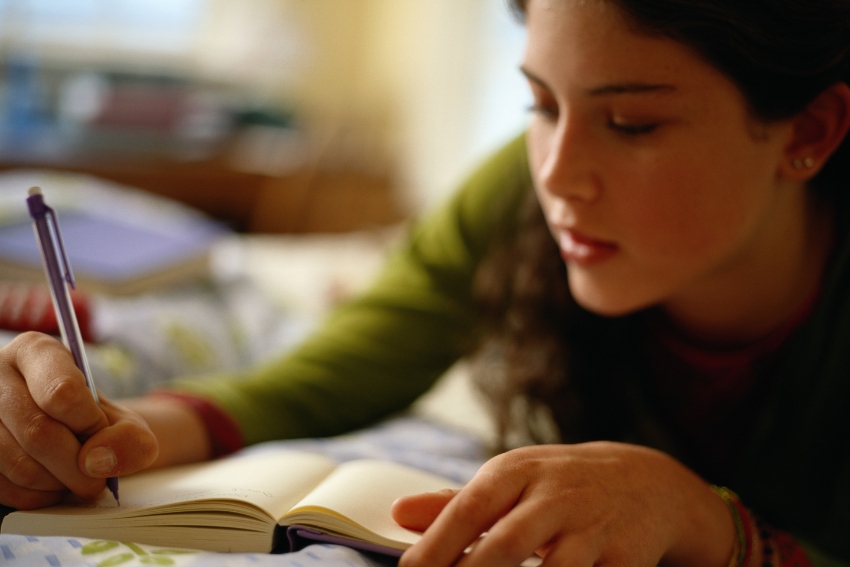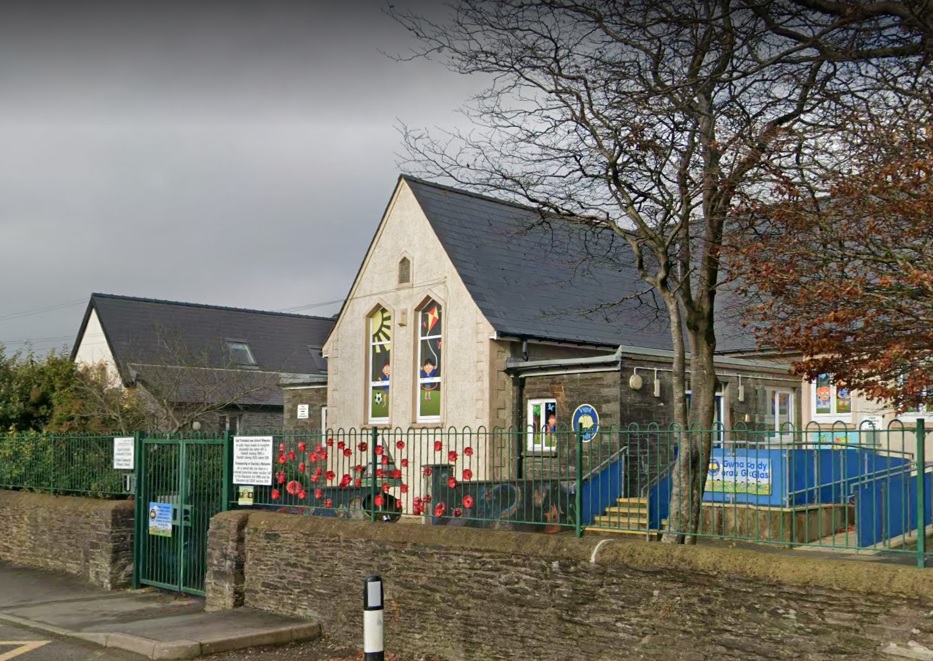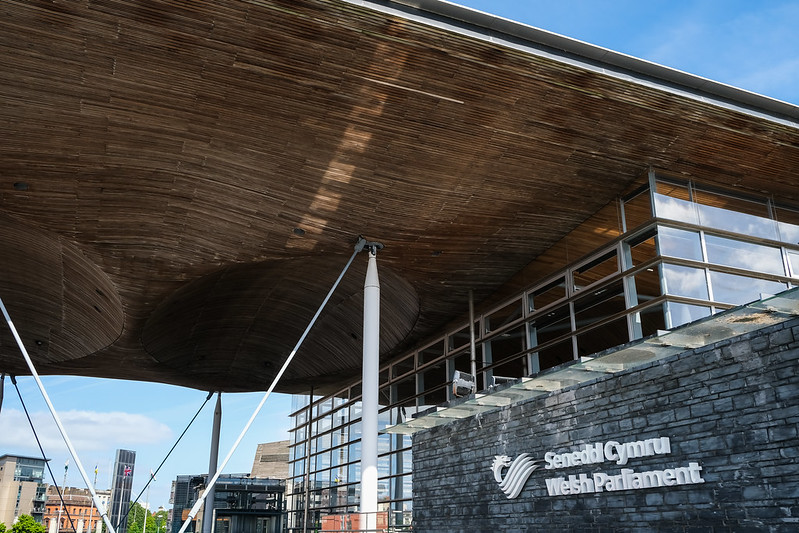Education
Fostering Creativity in Education: StateOfWriting’s Best Practice

Creativity is the beating heart of education, but finding an effective way to nurture creative thinking can be difficult. StateOfWriting encourages you, as an educator, and your students to unleash your creative sides with the following five practical strategies to enhance creativity in education.
1. Embrace Interdisciplinary Learning
Education stays isolated when topics are kept separate and are not mixed like ingredients in a smoothie – only when that happens is creativity born. Encourage children to find connections between subjects like art and science or history and technology. StateOfWriting is one free resource where educators can order custom-created assignments that mix the two, and students can get custom writing online. You would never expect algebra to help create a masterpiece, but sometimes, it could.
2. Create a Safe Space for Experimentation
In case you forgot, creativity is a messy process. It’s adding a pinch of mayhem so you can discover something that works. Support an environment where students can feel psychologically safe with experimentation and failure. Teach learners that there is no creation without experimentation and no success without trial and error. Students must learn not to fear the failing grade, but instead fear the missed opportunity to learn something new. Your classroom must be a safe zone where there are no bad ideas and no stone will be left unturned in search of wisdom.
3. Encourage Divergent Thinking
Ever heard of thinking outside the box? Teach your learners to destroy the box altogether – that’s even better. Divergent thinking is about finding more than one solution to a problem; even the wildest and craziest solutions that a person might think are bananas can work in mysterious ways, and that’s actually how most inventions were born. Appropriate prompts and exercises can encourage students to think outside the box when brainstorming ideas. With StateOfWriting, students can polish those wild ideas into structured essays or consolidated arguments that can make even the harshest cynics go: “Hmm. Maybe there is something to their idea after all”.
4. Integrate Technology in Creative Projects
Tech creativity? That doesn’t sound right, does it? But it can be! To make the most of creative assignments, provide students with digital tools and platforms where they can create. A digital museum exhibit, for example, or a multimedia presentation created with images, video, text, and music that illuminate a topic of study. Teach learners how to use these tools and platforms, helping your charges not only meet academic standards but also expand them creatively, shaping new possibilities.
5. Celebrate Diversity of Expression
There are more shades of creativity than you could find in a rainbow. Let your students express themselves in ways that are authentic to them: writing, drawing, music, dancing, and anything in between. StateOfWriting is here to support students beyond essay writing – we celebrate creativity in all forms and strive to offer resources that empower students to express themselves authentically. Be unapologetically yourself when working on your assignments, and the result will pleasantly surprise both you and your professors.
Unleashing the Creative Spark
Creativity isn’t just a buzzword. It’s the other side of learning, the spark in the corner of the professor’s eye, the impulse behind the kid asking questions. When educators turn thought into action and philosophy into exploration, students embrace the learning process. Interdisciplinary studies, safe spaces and playful experimentation, divergent thinking, technology, and the embrace of difference — these are the tools of creativity. With the help of StateOfWriting’s tools and tutors, educators can turn learning and assessment into a creative experience that lights the fires of innovation in every student.
Community
Pleas to save fire-ravaged Manorbier school site heard

A PLEA for councillors to not act as “judge, jury and executioner” when the potential closure of fire-ravaged Manorbier is decided upon next year was heard at full council.
At the December meeting of Pembrokeshire County Council, members received a petition opposing the potential closure of Manorbier School.
Manorbier Church in Wales VC School and its adjoining schoolhouse was severely damaged by a fire on October 11, 2022, which broke out in the school roof space.
After that, a ‘school from school’ was set up in Jameston Village Hall.
It had been hoped the school would be rebuilt, but earlier this year members of Pembrokeshire County Council backed a report of the School Modernisation Working Group which, amongst other recommendations, included a statutory consultation on proposals to discontinue Manorbier Church in Wales Voluntary Controlled School.
The decision attracted strong local opposition, with more than 1,500 people signing a petition on the council’s own website calling for the school to be rebuilt, meaning it passed the threshold for a formal hearing by members of the council.
The formal consultation for the discontinuation of Manorbier closes in just a few days on December 19.

However, many of the council’s figures, especially on the level of surplus places at the school, have been strongly disputed.
Speaking at the December meeting, Richard Hughes, of Manorbier Community Council, said the council consultation was “deeply flawed and unlawful,” the quoted capacity figures after the fire damaged the original building “null and void,” with a true surplus of some 21 per cent.
“The school is clearly thriving under less-than-ideal conditions, your report claims 59 per cent [surplus], it’s misleading and artificial.”
He said the council was acting as “judge, jury and executioner” in its “deeply flawed” consultation.

Local member Cllr Phil Kidney said the staff, parents and pupils had been “living this process for three years,” adding: “At worst light we were misled for three years, living under this shadow, it’s not fair.
“We’ve been promised all along ‘we will rebuild this school; no matter what we do we will have to spend on this school, we have to hand it back in [a useable] condition.
“How members of staff have worked under these conditions for three years is amazing, the service they are providing in that school is fantastic.”
He criticised the consultation wording, feeling it painted Manorbier in an unfair light, saying it was stacked heavily in favour of St Florence school in a submitted question heard later at the meeting.
“We do feel there’s a hidden agenda, nothing more than a boost for St Florence school; we were led to believe was all about the positives and the negatives for the school; we have lost the trust in the director of education, we still feel we’re not been listened to.”
He said it was important councillors, when a final vote on Manorbier’s future, expected in March, keep an open mind “not just going along with the narrative: ‘We can’t afford it, and the figures are going down’.”
He went on to say: “We want to get the right vote, the moral vote, and get the school rebuilt.”

Cabinet member for education Cllr Guy Woodham praised the work at the school following the fire, saying he intended to “set the facts out” when it came to a final decision.
Leader of the independent group Cllr Huw Murphy said: “It just doesn’t sit right with me to close a school that has burned to the ground. Yes, we will respect the decision in March, however we haven’t handled the decision well. We need to do what’s right, and we haven’t done what’s right for Manorbier.”
Members agreed to note receipt of the petition prior to the final report before council in 2026.
Later in the meeting, Cllr Woodham disputed Cllr Kidney’s submitted question claim, Cllr Kidney telling Cllr Woodham: “We’ve put a lot of trust and faith in you on this consultation to make sure it’s fair and transparent. St Florence was referenced more times than our school, for a consultation I think it’s misleading.”
Cllr Woodham responded: “I will do my utmost to give a balanced report when I bring it back to full council.”
Community
Plea to save Tegryn Ysgol Clydau school heard by councillors

A PLEA to not “pluck the heart out of a community” by closing a Pembrokeshire village school was heard by councillors just days after a consultation into its future was launched.
At the December meeting of Pembrokeshire County Council, members received a petition opposing the potential closure of Ysgol Clydau, Tegryn, which had generated 648 responses on the council’s own website, meaning it crossed the threshold to be heard at full council.
A council statement accompanying the launch of the consultation said: “At its meeting on May 8, Pembrokeshire County Council considered a report of the School Modernisation Working Group which outlined the findings of a review of education provision in the Preseli area.
“In particular the review considered the extent of surplus school places in the area, set against a significant decline in the pupil population.”
The Ysgol Clydau petition states: “We demand that Pembrokeshire County Council reconsider its decision to close Ysgol Clydau and instead prioritise the needs of our community by keeping the school open. We oppose the closure of Ysgol Clydau and call for full public scrutiny before any decision is made.
“We urge you to engage in a meaningful dialogue with the community, listen to our concerns, and work with us to find alternative solutions that support the needs of our children and families.”

Speaking at the meeting on behalf of the petitioners, Sarah Farnden, in an emotive plea, said the school was “not just a school but a sanctuary, a nurturing environment,” which offered “warmth, belonging and safety”.
“A village without a school becomes a village without families, a village without families becomes a village without a future,” she told members, adding: “Ysgol Clydau is not in debt, it’s not overspent, we’ve done everything asked of us, so why are we being punished?
“There has been a school on this site for 145 years, if you close Ysgol Clydau you are not closing a building you are closing a heritage; we are not here to fight you, we are here to beg you.”

Local member Cllr Iwan Ward said: “The decision of Pembrokeshire County Council to release this consultation on the closure a few days before Christmas is extremely disappointing, a time of year families should be concentrating on being together, not a time to have to face the threat of losing the heart of our community.”
To applause from the gallery, he added: “It’s not a matter of numbers on a paper, it’s a moral matter; the school is much more than four walls, it’s a safe place for children to grow and a cornerstone of community spirit.
“Closing a school like this rips the heart out of rural life, to threaten a school that isn’t failing is an action I cannot, and am not willing to, take quietly.
“I will stand with the staff, the governors, and the children also.”
Members heard the consultation had been expected to launch back in September but had been delayed due to staffing issues; its 42-day period due to now end in late January.
Members agreed to note the petition ahead of the consultation end, recommendations on the school’s future expected to be decided in March.
The final word went to Sarah Farnden, who said: “We’re not asking for special treatment, we’re asking for fairness and compassion; do not pluck the heart out of the community.”
Education
School leaders deliver Christmas cards to Senedd calling for fair funding

SCHOOL leaders from across Wales are delivering Christmas cards to the Senedd today in a symbolic call for fair funding for schools.
The cards, one for every Senedd member, are being delivered by school leaders’ union NAHT Cymru, urging politicians to give children in Wales what it describes as the “best Christmas gift” – a fully and fairly funded education.

NAHT Cymru national secretary Laura Doel and president Kerina Hanson are gathering outside the Senedd at 1:00pm today before handing the cards in at the Senedd reception.
The action follows the union’s warning last week that while £339m came to the Welsh Government as a result of increased education spending in England for the 2026/27 draft budget, only £39m has so far been allocated to core school budgets in Wales.
Earlier this week, an additional £112.8m was allocated to local government following a budget agreement between the Welsh Government and Plaid Cymru, with some of that funding expected to reach schools.
However, NAHT Cymru says the additional money will fall well short of what is needed. The Welsh Local Government Association has predicted a £137m shortfall in school budgets in Wales for the next financial year, while local authorities are also facing a £200m deficit in social care funding.
The union has also raised concerns that the First Minister has declined to explain how the £339m of additional education funding has been allocated, prompting calls for urgent and transparent scrutiny of the budget.
Speaking ahead of the card delivery, Laura Doel said: “Christmas is a time of giving, and we’re urging the Welsh Government to give schools in Wales the funding they rightfully deserve.
“The money that comes to Wales for education should be spent on education, yet we know much of it has never reached schools. We urgently need clarity on where this money has gone and to see greater investment going directly to pupils.
“The system is at breaking point, and without action we are facing an incredibly bleak new year for schools across Wales.
“We’re calling on every member of the Senedd to act this Christmas and give children in Wales the best possible gift – a fully and fairly funded education.”
The Welsh Government says education remains a priority, pointing to additional funding agreed with Plaid Cymru for local government, some of which is expected to support schools.
However, teaching unions and local authorities continue to warn that funding pressures remain severe.
-

 Crime1 day ago
Crime1 day agoMilford Haven man jailed after drunken attack on partner and police officers
-

 News4 days ago
News4 days agoDyfed-Powys Police launch major investigation after triple fatal crash
-

 Crime1 day ago
Crime1 day agoTeenager charged following rape allegation at Saundersfoot nightclub
-

 Crime2 days ago
Crime2 days agoMan charged with months of coercive control and assaults
-

 Crime3 days ago
Crime3 days agoMan sent to Crown Court over historic indecent assault allegations
-

 Crime5 days ago
Crime5 days agoMan spared jail after baseball bat incident in Milford Haven
-

 Crime3 days ago
Crime3 days agoMilford Haven man admits multiple offences after A477 incident
-

 Crime2 days ago
Crime2 days agoWoman ‘terrified in own home’ after ex breaches court order













